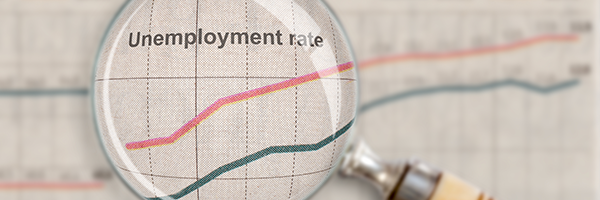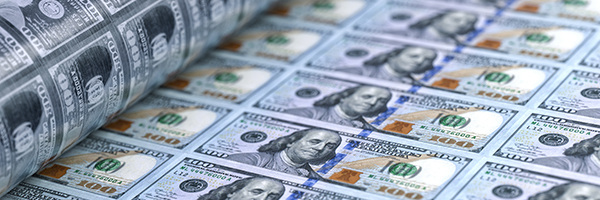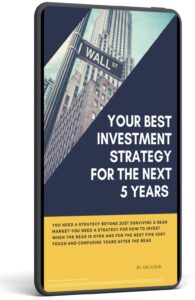
September 10, 2022 | Daily JAM |
All attention will focus on Tuesday morning’s report of Consumer Price Index inflation for August. It is likely to drive stocks higher in a continuation of Friday’s advance. But the report will not change the Federal Reserve’s mind about increasing interest rates again when the central bank’s Open Market Committee meets on Wednesday, September 21. The CPI data are likely to make the Fed, even more, resolved to raise rates by a big 75 basis points.

September 9, 2022 | Daily JAM, Morning Briefing |
According to the CME Fed Watch Tool, which calculates the odds of a Fed move in interest rates by looking at prices in the Fed Funds Futures market, the odds of a 75 basis point interest rate increase by the Federal Reserve at its September 21 meeting have climbed to 90%. The odds were 87% yesterday and just 68% a month ago on August 9.
And what does the market expect after that? 50 basis points higher at the November 2 meeting (83% odds) and 66.5% odds that interest rates will finish the year at 3.75 to 4.00% after the December 14 meeting. After that though, the picture gets murky. And that murkiness is the reason, in my opinion, for another Bear market rally to end 2022.

September 9, 2022 | Daily JAM |
Add Federal Reserve Bank of St. Louis President James Bullard and Fed governor to the list of those Fed voters speaking in favor of a 75-basis-point interest rate increase at the Federal Reserve’s September 21 meeting.

September 5, 2022 | Daily JAM, Special Reports |
Today, September 5, I’ve gone back through this Special Report to update any parts of my calendar in light of what we’ve learned about the economy, about Federal Reserve interest rate policy, and about the global economy in the last few weeks. This update includes my take on the August jobs report and on recent Fed-speak from the Jackson Hole conference and after. It is different this time. And it’s likely to “be different this time” for the next five years or so. And you need an investment strategy for that period.

September 2, 2022 | Daily JAM |
This morning the financial markets had convinced themselves that the slight rise in the unemployment rate to 3.7% and the relatively modest addition of 310,000 jobs in August would lead the Federal Reserve to moderate its interest rate increase at its September 21 meeting to a hike of just 50 basis points instead of 75. By the close, however, the market was having second thoughts.

September 2, 2022 | Daily JAM, Morning Briefing |
The U.S. economy added 315,000 jobs in August. Economists had projected that the economy would add 300,000 jobs. The unemployment rate rose to 3.7% from 3.5% as more workers entered the workforce. The labor participation rate rose in August to 62.4 $ from 62.1% in July. That’s till 1 percentage point below the labor force participation rate in February 2020, before the Pandemic. That took the official unemployment rate up to 3.7% from 3.5% in August. Out-of-the-box financial markets saw these numbers as likely to convince the Federal Reserve to raise interest rates by just 50 basis points at its September 21 meeting instead of the 75 basis points expected by the majority of investors before today’s data. In early trading the Standard & Poor’s 500 was up by as much as 1.3%.

August 31, 2022 | Daily JAM, Morning Briefing |
The stock market still hasn’t completely accepted the likelihood of a recession forced by the Federal Reserve’s interest rate increases. And there’s still optimism about interest rate cuts in the second half of 2023. But I sense that the market consensus is moving on from the hopes for a soft landing–where higher interest rates slow the economy and whip inflation without causing a recession–to what Bloomberg today called a “growth recession.”

August 31, 2022 | Daily JAM, Morning Briefing |
With all due apologies to T.S. Eliot, when it comes to stocks, April isn’t the cruelest month. That title goes, hands down, to September. Which my calendar says starts tomorrow. September is, on average, the worst-performing month for stocks

August 30, 2022 | Daily JAM, Morning Briefing |
Today’s JOLTS report–Job Openings and Labor Turnover Survey–from the Department of Labor showed the number of available jobs climbing in July to 11.2 million. That’s up from a revised 11 million openings in June. Economists had expected a decline in the number of job openings to 10.4 million for the month. The surprising increase in job openings shows that the labor market continues to be extremely tight. The Federal Reserve has tagged labor market conditions as a key indicator that it is watching as it sets interest rates.

August 29, 2022 | Daily JAM, Morning Briefing |
Financial markets are fixated on the risk from the Federal Reserve’s interest rate increases. But that means the markets are overlooking the risk posed by the Fed’s efforts to reduce the size of its balance sheet.

August 28, 2022 | Daily JAM, Jubak Picks, Morning Briefing |
Asian traders bid down futures for Japanese stocks by almost 2% and by 1.5% for Australian stocks ahead of the Monday opening of New York markets. On Friday, after a hawkish speech on interest rates and inflation by Federal Reserve chair Jerome Powell the Standard & Poor’s 500 lost 3.37%.

August 27, 2022 | Daily JAM |
There’s no magic spell from the Federal Reserve that compels markets to believe Friday’s higher interest rates for longer speech from Fed chair Jerome Powell. I’d look for substantial pushback from investors and traders–and big money managers–who even on Friday were arguing that nothing had changed and that the Fed would still move to cut interest rates in the second half of 2022. I’m not sure that even a 75-basis-point increase in the benchmark interest rate at the Fed’s September 21 meeting would be enough to convince this group. While I think logic argues against it, I wouldn’t be surprised to see a bounce back from Fridays selling this week. I wouldn’t buy into such as move as a longer-term trend.











